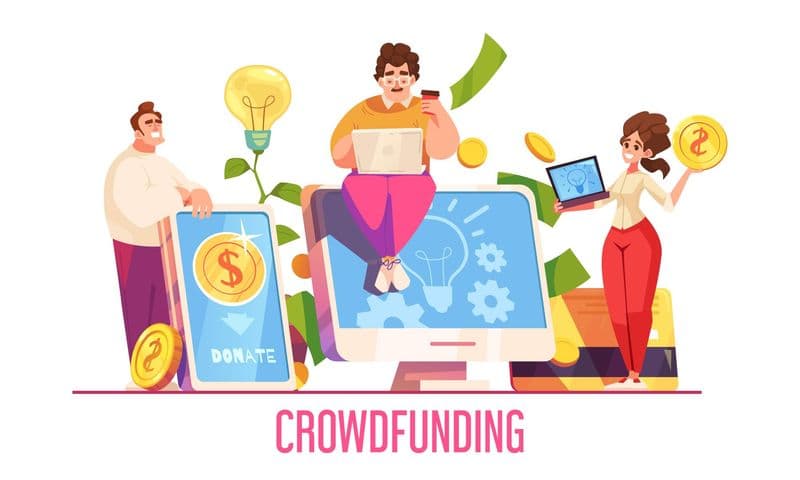Introduction
While relevant content will improve email deliverability, the content won’t matter if your email subscribers never see it. Marketing teams struggle with deliverability, with a significant percentage of marketers citing it as their primary challenge. Fortunately, email marketers don’t have to contend with constantly changing algorithms and ranking factors.
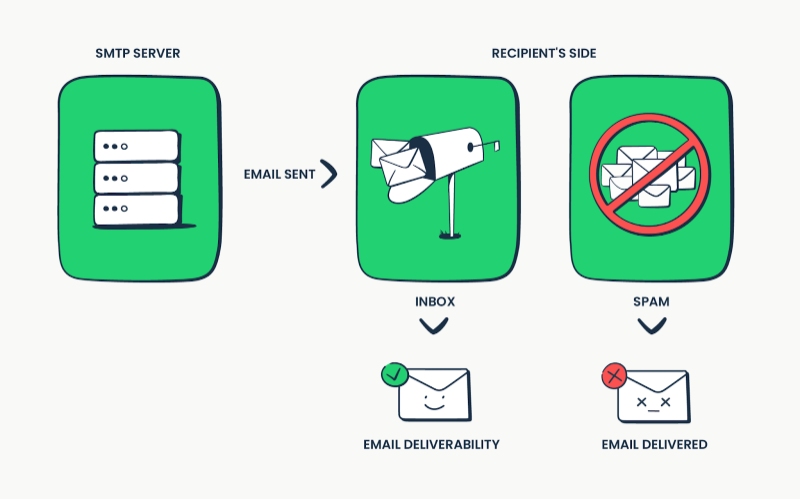
You can improve your email deliverability with a few strategy tweaks. This blog post will explore some of the most effective techniques to get your emails successfully delivered to your subscribers’ inboxes.
What Is Email Deliverability?
Email deliverability refers to the ability of an email to successfully reach its intended recipients' inboxes without being filtered into spam folders. It's like the trusty postal service ensuring your mail gets delivered to the right mailbox. Just as a well-addressed letter with clear postage stamps has a higher chance of reaching its destination, emails with good deliverability have higher chances of landing in the inbox. Emails lacking proper authentication or containing suspicious content may get flagged as spam. So, ensuring good email deliverability is like being the reliable postman who ensures your message reaches its destination safe and sound.
What Is An Email Blast?
An email blast refers to the practice of sending a single email message to a large number of recipients simultaneously. It's like launching a confetti cannon of information directly into the inboxes of your target audience. Email blasts are often used for promotional purposes, such as announcing a sale, sharing updates, or distributing newsletters. However, it's important to note that email blasts should be sent responsibly, adhering to anti-spam regulations and best practices. Just like a well-orchestrated symphony, a thoughtfully crafted email blast can capture attention and engage recipients effectively.
To execute an email blast effectively, follow these simple pointers:
Also read: How to email clients?
1. Build a Quality Email List
2. Create attention-grabbing subject lines that entice recipients to open your emails. Keep them concise, clear, and relevant to the content inside.
3. Use visually appealing and mobile-friendly email templates. Incorporate concise and compelling copy, accompanied by relevant images or graphics.
4. Personalize the email content by addressing recipients by their names or using dynamic content to tailor messages based on their preferences or past interactions.
5. Make your CTAs prominent and strategically placed within the email.
6. Continuously analyze email performance and make necessary optimizations.
7. Monitor Deliverability and Engagement
8. Comply with Regulations
Remember, effective email blasts are about delivering valuable content to your audience, respecting their preferences, and fostering engagement. By following these guidelines, you can maximize the impact of your email blasts and achieve your marketing objectives.
Why email deliverability matters?
Email deliverability matters because it directly impacts the success of your email marketing campaigns. When your emails reach the intended recipients' inboxes, you have a better chance of engaging them, driving conversions, and building lasting relationships. It gets even better when they open it, stick around to see the end of your mail, and proceed to act on it. However, if your emails end up in spam folders or are blocked by ISPs, your messages will go unseen, rendering your efforts ineffective. The whole point of cold emails is lost here. That is why it is important to track the deliverability of your email and make your best efforts to improve them. Let us delve into the factors that help in improving your email deliverability.
Factors that contribute to better email deliverability
Prime Your IP For Success
If you have a new IP address with a poor sender reputation, build it slowly to establish your IP’s credibility. Start your email campaigns by sending small batches of marketing emails to engaged users. As your email program keeps growing, and your engaged audience receives and opens these emails, your IP builds trust.
You can then increase the number of emails slowly until you scale to your peak volume. Sending emails in bulk to your entire subscriber list from a “cold” IP address will probably send them to the spam folder.
Before ramping up sending volume, it’s also smart to clean and validate your list. Using tools like Debounce helps ensure that only valid, active addresses receive your emails, boosting deliverability and protecting your sender reputation.
If you plan to send a good volume of emails and don’t want to risk being affected by other band senders, consider a dedicated IP address.
Maintain a Strong Sender Reputation
In the world of email marketing, the sender's reputation matters. A low sender score will not improve email deliverability or inbox placement.
How does this happen? Email providers recognize the “safety” of emails based on the historical context of your IP addresses and domain reputation. With a DMARC quarantine/reject policy not enabled, your domain becomes vulnerable to spoofing, which can harm your sender reputation and reduce email deliverability.
ISPs (internet service providers) automatically reject any emails with a poor reputation. Use tools like Sender Score for a free score. Sender Score assigns a number to every outgoing mail server based on traditional metrics like spam reports and unsubscribed
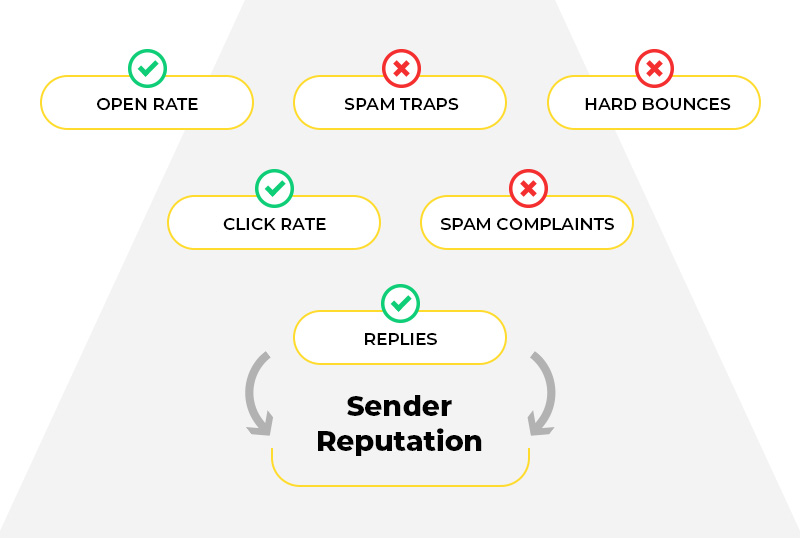
Stick to a Consistent Schedule and Deliver Consistently
Erratic broadcast activity can lead to lower email sender scores and IP rejection or a poor IP reputation. Maintain a regular schedule with your emails to avoid sending spikes. When you send emails consistently to your subscribers, they begin to expect your emails and trust you better.
Wait too long, and recipients will forget they were interested in subscribing in the first place. On the other hand, sending emails too frequently increases the likelihood that they will annoy your subscribers or end up in their spam folders.
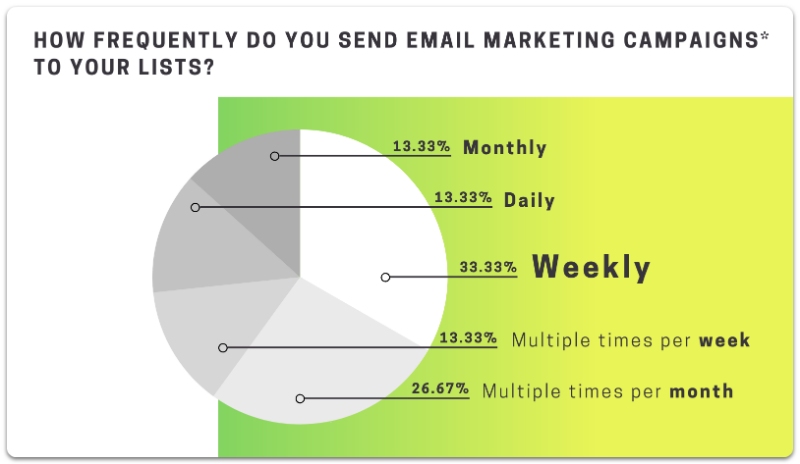
So, what’s a good email frequency? It varies by the type of campaign and audience, but once or twice a week is a good start. You won’t totally lose touch with your audience even if you drop back to once a month.
Use a Double Opt-In
With a single opt-in, users agree to receive emails by simply checking a box or leaving the pre-checked box checked. This may seem like a great way to build your mailing list, but it can backfire by generating spam complaints. Your internet service provider may also block servers based on spam reports.
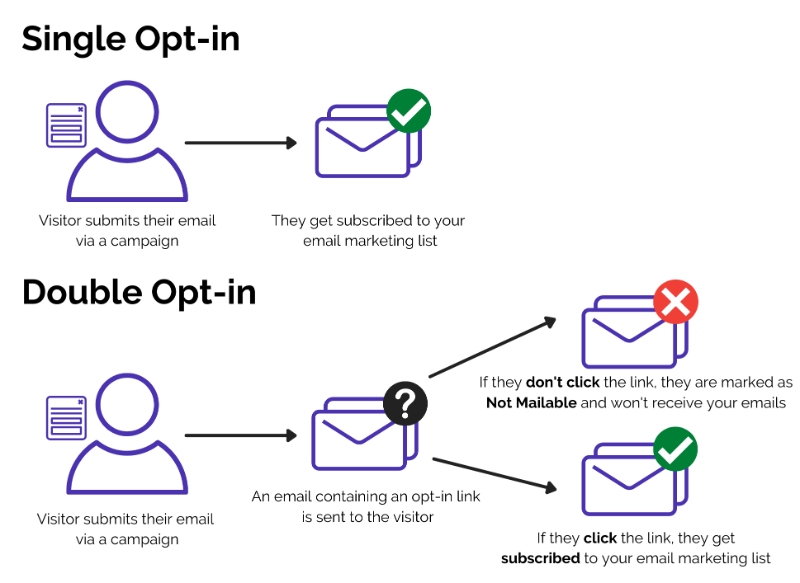
The best way to prevent hard bounces and spam issues is to use a double opt-in or confirmed opt-in. All you need to do is send transactional emails to new subscribers asking them to confirm their addresses and gain consent to send them emails. The extra commitment from subscribers to confirm their emails can improve email deliverability.
Review Your List Routinely
Every now and then, remove all inactive subscribers from your mailing list.
Removing addresses that hard bounce (invalid emails) and unengaged subscribers will increase your open rate and long-term email deliverability rate. If a subscriber doesn’t open your emails in a few months (depending on your sending frequency), consider cutting them loose.
You may also want to use a paid service to clean all bounces and catch typos, duplicates, inactive email addresses, do-not-mail records, and other engagement metrics that may affect your email deliverability. Email verification tools can further improve list quality by ensuring each address is valid and active before you hit send.
Check Blacklists

Whether or not you experience sending problems or having your emails delivered, it helps to check the blacklists. DNS-based blacklists protect users from IPs with a high volume of spam reports. If you discover your IP is blacklisted, visit the blacklist company’s page to find their requirements for removal from the list.
Email service providers like to obey the laws of the email ecosystem to prevent their servers from being shut down. You also want to check feedback loops.
Steer Clear of Spam Email Content
A spam trap tries to identify content that violates email providers’ policies. They use algorithms to identify words, phrases, or subject lines that spammers use and look out for bulky attachments and bad headers; these ISP filters work quite efficiently.

You have a higher chance of triggering spam traps with new recipients and need to exercise caution with spam-triggering phrases like “free”, “discount,” or “% off” when sending to new recipients.
The following protocols can improve email deliverability and help avoid spam traps:
- Domain keys identified mail
- Sender policy framework
- Domain-based message authentication, reporting, and conformance
Make It Easy to Unsubscribe
Making it easy for users to unsubscribe cultivates authenticity with your subscribers, prevents them from getting overwhelmed with hearing from your brand, and improves overall email engagement. You can create an easy opt-out process from your mailing list by including an unsubscribe link in every mail.
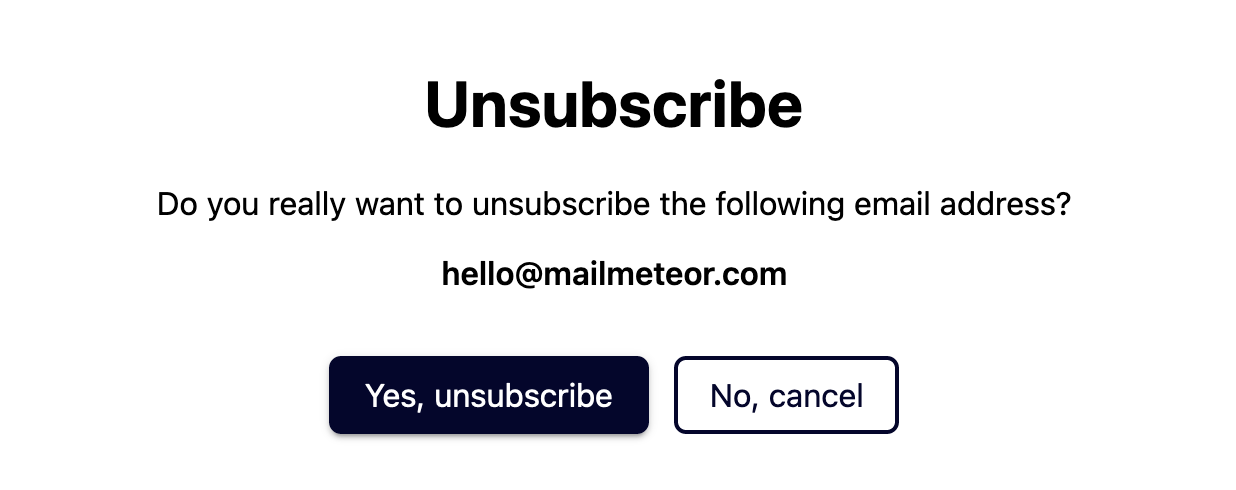
Some users may want to unsubscribe only because they don’t want emails as frequently or aren’t interested in the specific email campaign, so give them the option to adjust their preferences.
According to the CAN SPAM ACT, recipients have a right to have you stop emailing them.
Be Consistent with Your 'Sender Name'
Sending emails from a consistent name or using branding in your “from” name will help recipients get to know your brand and reduce spam complaints or email spoofing. Emails sent from varying sender names have a negative impact; recipients don’t know who they’re hearing from and will likely ignore your emails, assuming they’re phishing emails.
Keep things simple and send from your brand name or send personalized emails using an individual’s name, then add “from (business name)” after the individual name.
Conclusion:
Positive emails have a good impact on your campaigning efforts Following the tips listed above can help you with better Email Deliverability and up your campaigning game.
Want to improve email delivery and inbox better? Contact Ful.io or sign up to learn more about how to improve email deliverability and email marketing.


